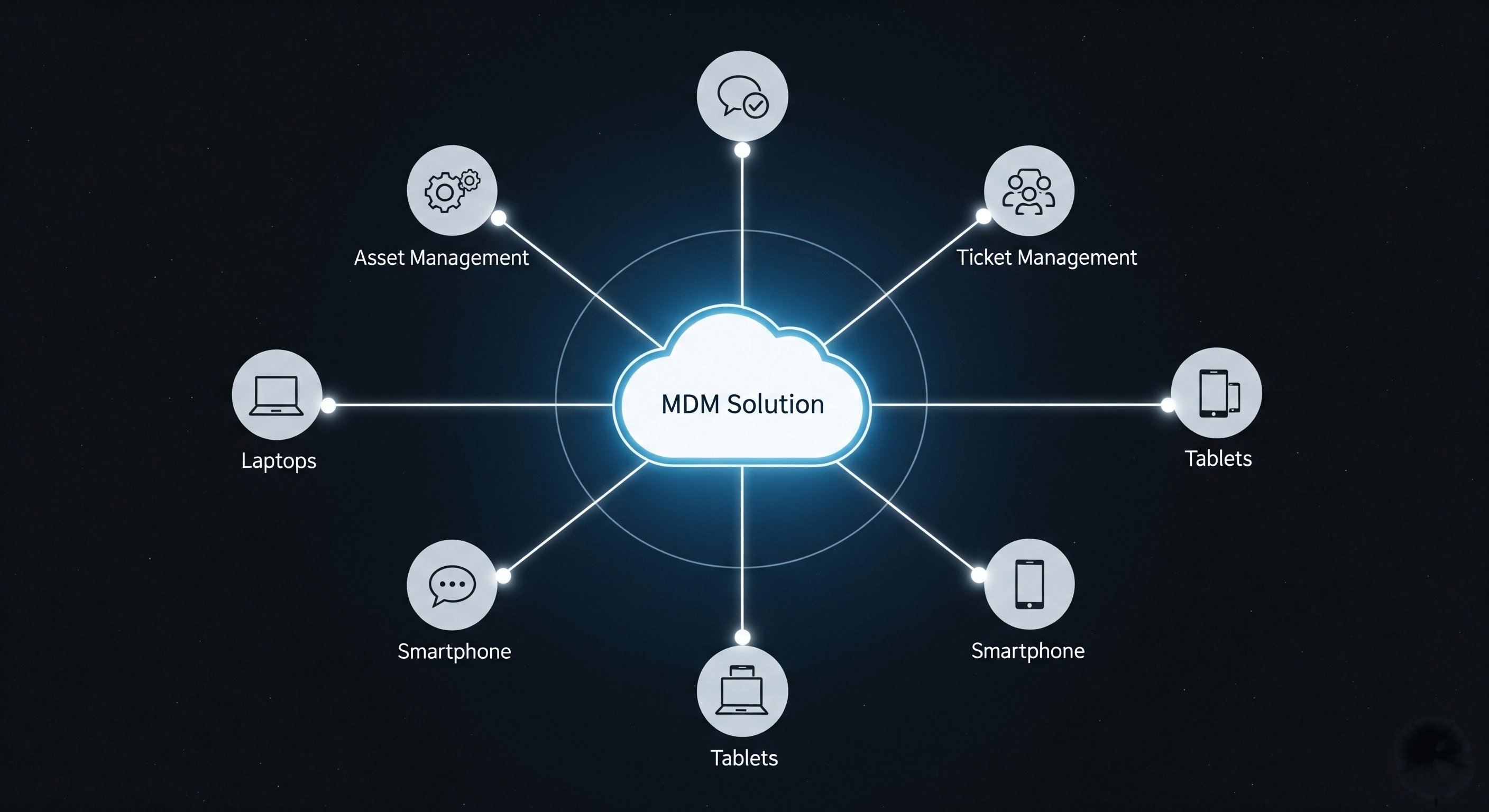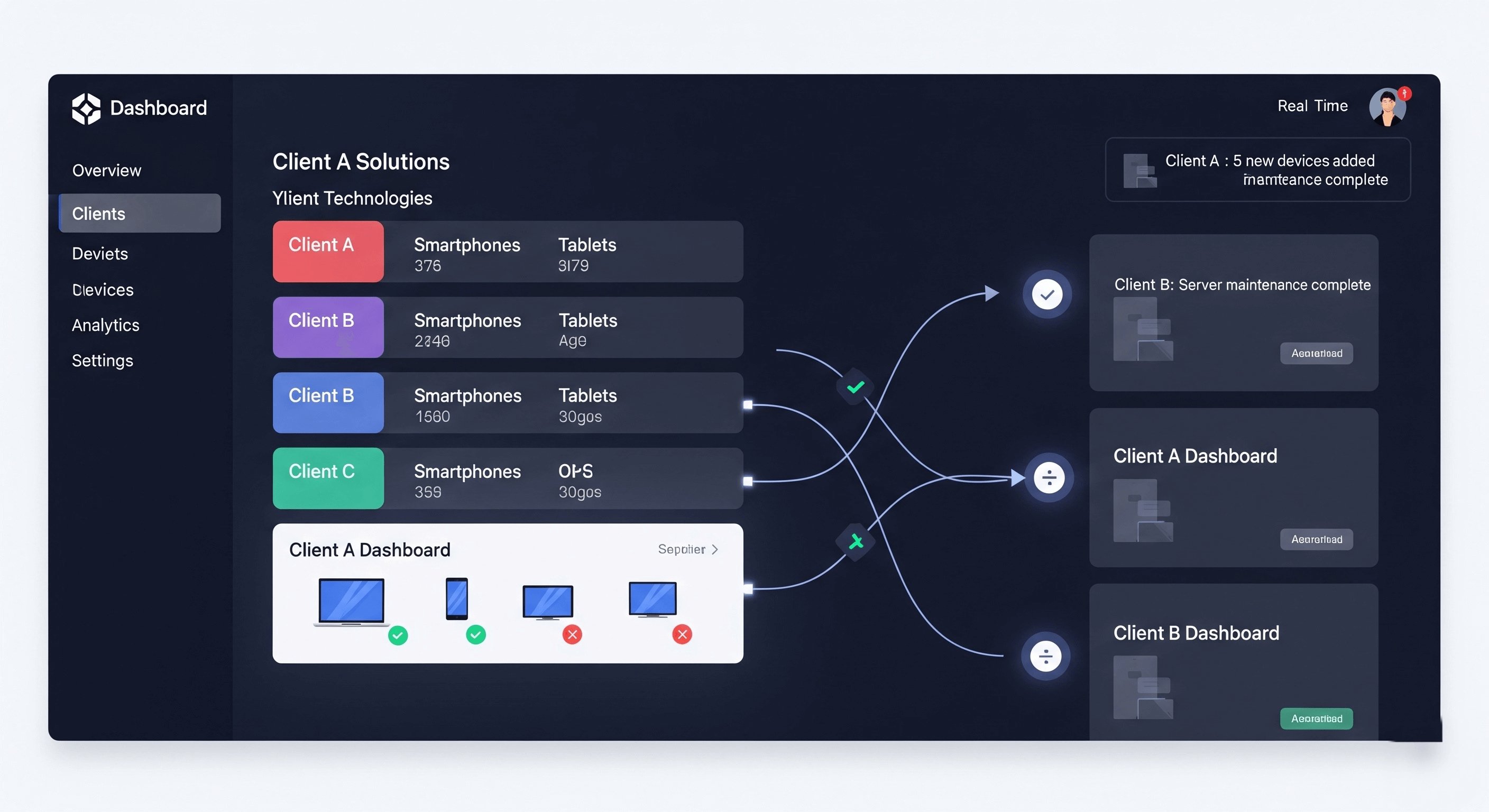In today's digital workplace, the number of corporate mobile devices—from employee smartphones to testing terminals—is rapidly increasing. For IT administrators, providing efficient and convenient support for these devices is a growing challenge. Traditional remote control software requires installing cumbersome desktop clients, which is not only inconvenient on devices like Macs and iPads but also fails to seamlessly integrate with a company's existing support systems.
This article explores how Mobile Device Management (MDM), through its capabilities for web based remote access and powerful API integration, is fundamentally reshaping corporate device management. It helps IT teams break free from limitations and build a highly efficient, automated, and exclusive IT operations ecosystem.

1 The Challenge: Limitations of Traditional IT Support Tools

Traditional remote support tools face three key pain points in a corporate management environment:
- Poor Cross-Platform Compatibility: IT team members may use different operating systems (Windows, Mac, Linux), and they often need to manage devices from mobile platforms (like iPads). The limitations of desktop clients lead to a fragmented workflow and make efficient, on-the-go support difficult.
- Cumbersome Operations: When a device issue arises, an administrator must first open a separate desktop application, manually find the device, and then initiate a connection. This entire process involves switching between multiple systems and interfaces, leading to low efficiency.
- Lack of Automation: Traditional remote tools are simple point-to-point connections. They cannot synchronize data or automate workflows with a company's internal ticketing systems, asset management systems, and other platforms, creating isolated data silos.
2 AirDroid Business: The Perfect Integration of Web and API
AirDroid Business, with its unique design philosophy, perfectly solves these pain points, elevating MDM to a new level:
Web-based Remote Access: Breaking Free from Desktop Constraints
One of the core strengths of AirDroid Business is its web-based remote access capability. You don't need to install any desktop applications; simply log in to your dashboard through any web browser to remotely access and control all your devices. This perfectly solves the pain points for Mac and iPad users, allowing IT administrators to perform remote troubleshooting and file management from anywhere, on any device.
API Integration: Building an Automated IT Support Ecosystem
The remote control API provided by AirDroid Business allows it to go beyond the scope of a traditional tool. Through open API interfaces, companies can seamlessly integrate remote control functionality with their internal systems to achieve:
- Automated Workflows: When an employee submits a device issue ticket in a support portal, the system can automatically call the API to trigger a remote connection and send an access link to the responsible IT administrator, saving manual operational time.
- Real-Time Data Synchronization: Real-time data, such as device online/offline status and app usage, can be synchronized to the company's internal monitoring dashboards via the API, ensuring IT administrators are always fully aware of device status.
- Customized Features: Companies can use the API to develop unique management scripts or applications based on their own needs, creating a customized management platform that perfectly fits their business processes.
3 AirDroid Business Case Studies: Successful Practices in Internal Device Management
The AirDroid Business solution has helped numerous companies in various scenarios innovate their internal device management:
A Telecom Service Provider:
A telecom service provider needed to manage 50 employee smartphones and planned to expand to 100. Their IT team used a mix of Mac and Windows computers and urgently needed a cross-platform remote support tool. By deploying AirDroid Business, they transitioned entirely to web-based remote access, which significantly improved the convenience of cross-platform support. At the same time, they are leveraging the API to integrate remote control functionality into their internal support portal, automating the connection between tickets and remote access and greatly boosting operational efficiency.
A Smart Hardware R&D Company:

A smart hardware R&D company manages hundreds of devices for product testing. To improve testing efficiency, they integrated the AirDroid Business API into their automated testing workflow. When a test script detects a device anomaly, the system automatically calls the API to generate a remote access link and a screenshot, allowing developers to quickly pinpoint and fix the issue. This created a seamless closed-loop from testing to bug reporting and resolution.
An IT Outsourcing Provider:

An IT outsourcing company faced the challenge of managing device fleets for multiple clients. They used the AirDroid Business web dashboard to centralize the management of all client devices on one platform. By using the API, they can also synchronize device statuses from different clients to their respective dashboards, achieving efficient and scalable centralized IT service provision.
4 Conclusion: Embrace Web and API to Build a Future-Proof IT Ecosystem
In today's pursuit of efficiency and automation, traditional device management models can no longer meet a company's needs. With its revolutionary capabilities for web-based remote access and powerful API integration, AirDroid Business provides a future-proof solution. It helps IT teams break free from tool limitations and focus their energy on more valuable automation initiatives, building a more efficient and intelligent internal IT ecosystem.





Leave a Reply.